|
78. Pyronia tithonus (Linnaeus, 1767) / Gate keeper / Nymphalidae – Satyrinae
NL: oranje zandoogje / D: Rostbraunes Ochsenauge / F: amaryllis
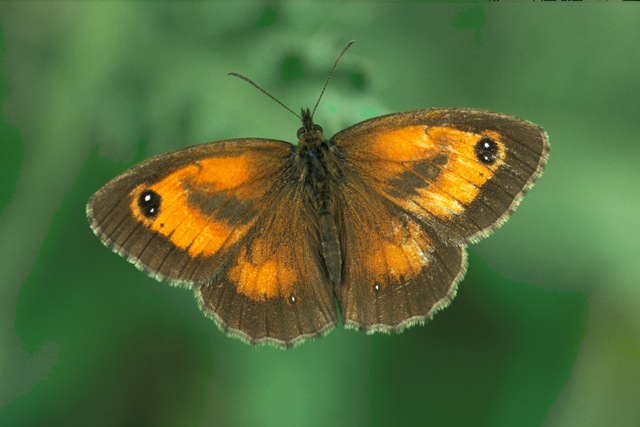 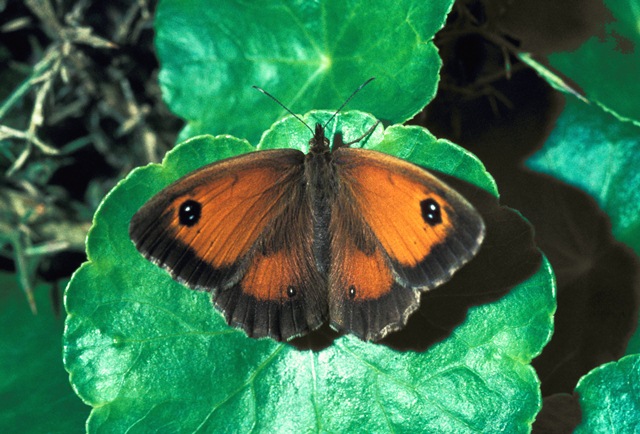 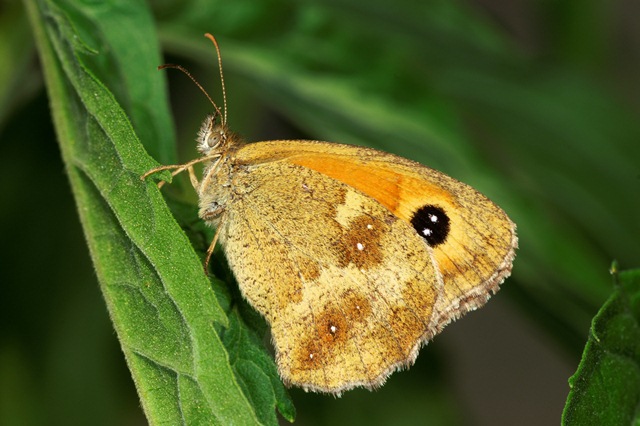
Photographs: Frits Bink, Frits Bink, Jeroen Voogd ©.
Small or medium-sized, wing length 19 (16-20) mm. In the Benelux, the species occurs in all countries where it inhabits edges of woods and copses in the countryside. The English name ‘gate keeper’ expresses its behaviour very well.
Butterfly is on the wing from early-July until mid-August and peaks end-July. The species is known from maritime to sub-continental climates, amplitude 4 to 10, required heat sum 700°d and maximum tolerated 2300°d, corresponding climate windows 24 and 41 weeks.
In the Benelux, the species occurs commonly in the south-western part of the coastal region and in the Netherlands also in the provinces of Drenthe and Overijssel. In the Netherlands it reaches the northern limit of its distribution; the western end of Poland is its eastern limit.
Ecological characteristics
Behaviour over time
Overwintering: small larva in second or third instar, hidden in tussock of its host-plant.
Reproduction: oviposition starts after 5-7- days when the body contains 72 (48-96) eggs, potential production 3.3 times as much. Female produces 24 (20-30) eggs per day.
Larval feeding periods: in summer 60 (49-72) days from mid-August until early-November, next spring 86 (70-107) days from end-March until mid-July.
Generations: one.
Spreading of risk: some of the freshly emerged larvae will aestivate for 10-30 days.
Life cycle: egg 18 (14-22) days; larva 37-46 weeks; pupa 19 (16-21) days.
Life span of adult: long, 4 weeks.
 
Photographs: Frits Bink ©.
Behaviour in space
From stay-at-home to migrant: stay-at-home, spatial requirement modest.
Finding a mate: male perches and behaves territorially.
Orientation in the landscape: gradient from woodland or shrub to tall grassland.
Oviposition: randomly distributed on tall grass at selected sites.
Defence
Threats from other organisms: avoidance by living hidden in a tussock and occurring in two colour forms: green and brown.
Threats from the environment: the species occurs mainly in warm and humid environment, an indication that the butterfly is vulnerable.
Feeding habits
Adult: nectar on all kinds of flowers, may congregate on flowers of alder buckthorn or bramble.
Larva: newly hatched larvae may aestivate for 4 weeks, others begin to feed immediately.
Larval foodplants
Plant species: Poaceae, e.g. Agrostis capillaris, Alopecurus pratensis, Brachypodium pinnatum, Cynosurus cristatus, Dactylis glomerata, Deschampsia cespitosa, Elymus repens, Festuca gigantea, F. pratensis, F. rubra, Phleum pratense, Poa pratensis.
Journal
Rearing experiment based on specimens from Appelscha, Netherlands:
28 July 1990: four females captured from a group on a flowering alder buckthorn.
29 July: eggs laid.
14 August: eggs hatched.
25 August: 28 newly emerged larvae: 14 with filled digestive tract, eight green larvae mid first instar.
8 September: last freshly hatched larva started to eat, biggest one in moult L1-2.
30 September: 23 larvae; five L1, 14 mid L2, four end L2.
27 October: 20 larvae, 13 L2, seven L3; L2 larvae were 3 mm, and L3 4.5 mm in length.
Overwintered outdoors.
7 March 1991: no larval activity observed.
14 March: start of larval activity, three larvae in L3 were feeding, four larvae in moult L2-3.
28 March: one larva L4.
Table 78-1. Results of dissections

Table 78-2. Collection and observation localities
F, Aurel, 400 m, 44° 43’N – 5° 16’E; 29 August 1984, 2 September 1984.
F, la Bruyère 45° 39’ 01”N – 5° 38’ 09”E; 25 August 1984.
F, Montmédy, 217 m, 49° 31’ 07”N – 5° 21’ 33” E; 12 June 1984, 18 August 1984.
GB, Dorking 51° 14’ 32”N - 0° 21’ 13”W; 23 July 1981.
GB, Frensham Great Park 51° 09’ 28”N - 0° 47’ 26”W; 21 July 1981.
NL, Appelscha 52° 56’N – 6° 17’E; 28 July 1990.
NL, Dintelse Gorzen 51° 37’ 57”N – 4° 15’ 39”E; 22 August 2000.
NL, Kampina 51° 34’ 04”N – 5° 14’ 51”E; 12 July 2003.
NL, Leende, Strijper Aa, 51° 19’ 15”N – 5° 32’ 30”E; 27 July 1982.
Fig. 78-1. Pyronia tithonus, phenogram adapted from Fichefet et al. 2008: 253.
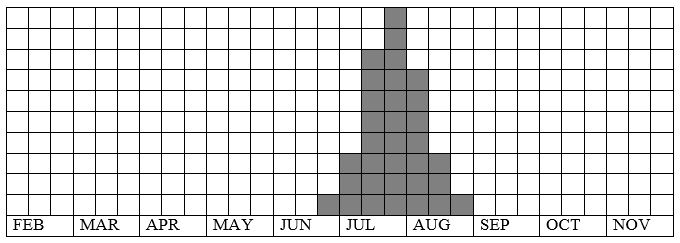
Fig. 78-2. Pyronia tithonus, habitat characteristics.
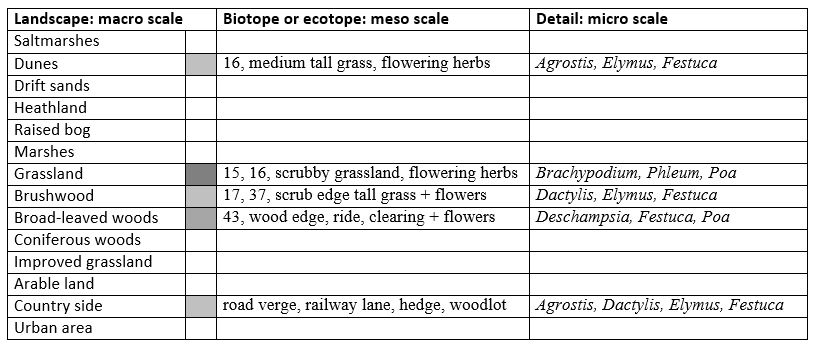
Fig. 78-3. Pyronia tithonus, climate matrix, heat-sums 700 - 2300°d.
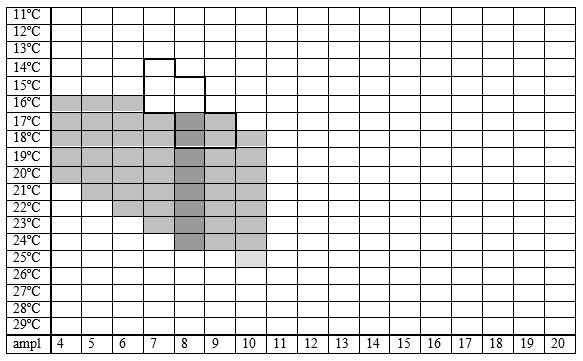
|










